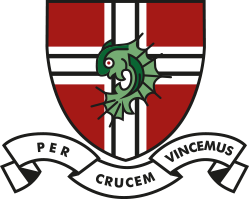Teaching and Learning
Teaching and Learning Intent
At St. John Fisher our teaching and learning policy is built upon the principles of Rosenshein as well as cognitive science. All our lessons are structured so that there is opportunities to revisit previous learning and strong teacher modelling and exposition is followed by significant amounts of independent practice time within lesson. This time for independent practice is enhanced by our altered timetable of 100-minute lessons this allows our students to embed new learning and develop mastery. Furthermore, the altered lesson length allows for staff to deep dive into misconceptions and explore opportunities for cultural capital where the arise.
Students throughout Key Stages 3, 4 and 5 follow a well sequenced, ambitious curriculum with detailed schemes of work underpinning each unit of study. An Academy wide lesson cycle allows the implementation of each lesson to be consistent within and across departments whilst still allowing for lessons to be tailored to meet the differences required for different subject disciplines.
Assessment within class is regular and meaningful and we promote assessment strategies such as mini-whiteboards, low stakes quizzing and personalized live marking. Formal assessments take place at the end of each unit and are a regular feature across the academy. We expect our teachers to mark these assessments so that they have insight into where gaps in student learning are and they can close these quickly.
We do not impose a restrictive whole school marking policy on our faculties, instead we rely on the expert judgement of our teachers and our faculty leaders to formulate their assessment policies so that it meets the needs of their curriculum area and promotes student progress without placing an unnecessary and excessive workload on teaching staff.
Teaching and Learning Handbook
Further information can be found in our Teaching and Learning Handbook, which is available here.



